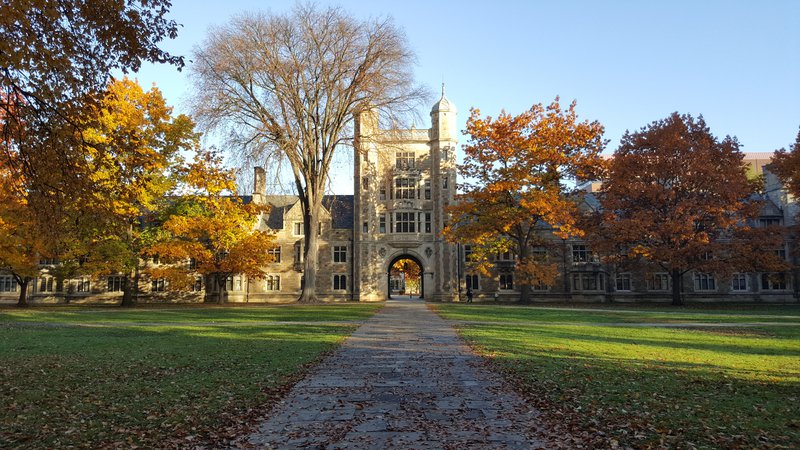A Better Way to Judge Schools on Non-Need-Based Aid
Blog Post

Feb. 19, 2020
Last week, New America released my new report “Crisis Point: How Enrollment Management and the Merit-Aid Arms Race Are Derailing Public Higher Education,” which charts the extraordinary growth of the use of non–need-based aid at public universities from 2001–2017. And it shows how the transition that public universities have made from being “low-cost, low aid” to being “high-cost, high aid” has been detrimental for low-income and working class students by leaving them with large funding gaps that often stymie their educational progress.
As journalists have dug into my report, they have especially focused on a chart that identifies the public universities that increased their spending on non–need-based aid the most during the 17-year time period. The chart, which appears on p. 21 of the report, lists 16 schools that boosted their spending on so-called “merit aid” for relatively affluent students by $30 million or more over this period of time. Leading the pack is the University of Alabama, which saw its non–need-based aid budget grow by a whopping $123 million from 2001–2017.
Some reporters have naturally jumped to the conclusion that these 16 schools are the worst players in the merit aid arms race: the ones that are leaving their low-income and other financially needy students with the largest funding gaps, as they use their aid strategically to lure wealthy out-of-state students to their campuses.
I don’t blame the journalists. I assumed the same when I began analyzing data looking at the average share of financial need that the 339 schools met over this time period. But as I crunched the numbers, I soon realized I was wrong.
As I wrote later in the report:
And, in fact, when looking at the financial need met data more closely, the analysis found that it did not matter whether individual schools increased or decreased the amount of non–need-based aid they spent from 2000-2001 to 2016-2017. Both sets of schools reduced the share of financial need that they met.
Clearly, there was not a direct relationship between the two variables. Schools that increased their spending on non–need-based aid did not automatically reduce the share of financial need they met. Other factors were at work.
What the analysis did find, however, was that schools that predominantly used their institutional aid to provide scholarships or discounts to relatively affluent students in 2016-17 appeared to leave financially needy students with larger funding gaps than those that primarily used their aid to meet need. In looking for a relationship with the financial need met figures, the key element was not the amount of money that schools spent on non–need-based aid or whether that amount went up or down, but how big a share of the school’s aid budget that spending represented.
When looking again at the list of 16 schools, it is clear that some schools are heavily investing in the arms race and have left low-income and other financially needy students in the lurch, and others are better players, using their aid primarily to meet need.
Unsurprisingly, two of the most regressive schools on the list are the University of Alabama and Auburn University, which compete fiercely against each other for top students in Alabama and around the country.
In 2016-2017, the University of Alabama spent $136 million on non–need-based aid, the most of any public university in the country. That amount, which was $123 million more in inflation-adjusted dollars than in 2000-2001, represented about two-thirds of the university’s total aid budget. Meanwhile, the school met, on average, only 58 percent of the financial need of its student aid recipients, 15 percent points less than the average amount of need it met in 2000-2001, when it spent just $13 million.
Auburn spent $39 million, or 64 percent of its aid budget, on non-need-based aid in 2016-2017, up from about $2 million in 2000-2001. The school met, on average, just 52 percent of the financial need of its aid recipients, 5 percentage points less than it met in 2000-2001.
By contrast, there are other schools on the list – such as Arizona State and the University of Michigan – that still devote the bulk of their aid dollars to students with financial need.
Arizona State, for example, spent a total of about $212 million on institutional aid in 2016-17, with nearly two-thirds of it devoted to need-based aid. The university met, on average, 70 percent of the financial need of its aid recipients that year, 3 percentage points more than in 2000-2001. So while it spent more than $79 million on non–need-based aid, it did a far better job meeting the financial needs of its students than most of the other schools on the list.
And although the University of Michigan spent more than $60 million on non–need-based aid in 2016-2017, it can hardly be called regressive. The school devoted 70 percent of its aid funds to need-based aid and met, on average, 92 percent of the financial need of its student aid recipients that year. Of the 339 public universities examined in the report, only 9 did a better job covering their students’ need.
Obviously in an ideal world, I don’t think there is much justification for schools spending tens of billions of dollars on non-need-based aid when they are leaving low-income and financially needy students with significant funding gaps. But in the world we live in, we can’t just judge schools by the amount of money they are spending on non–need-based aid. The story is more nuanced than that.